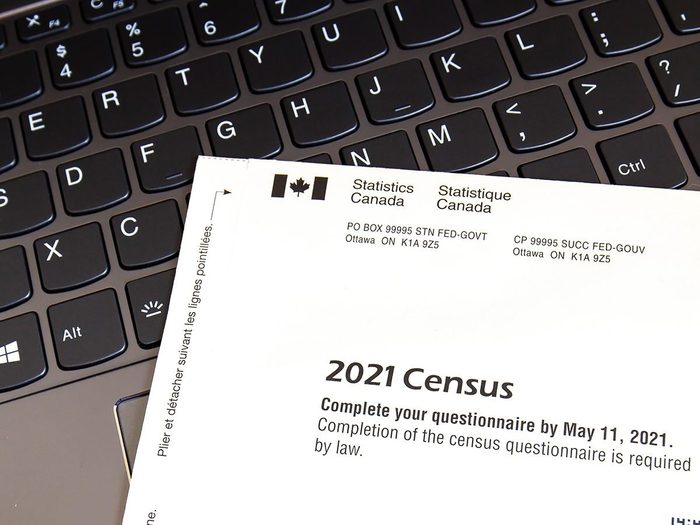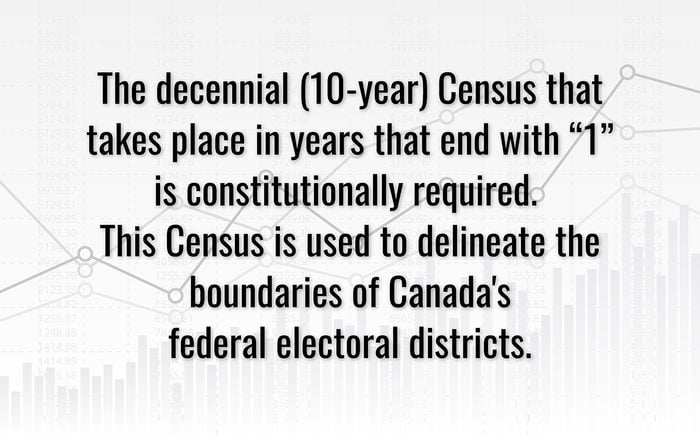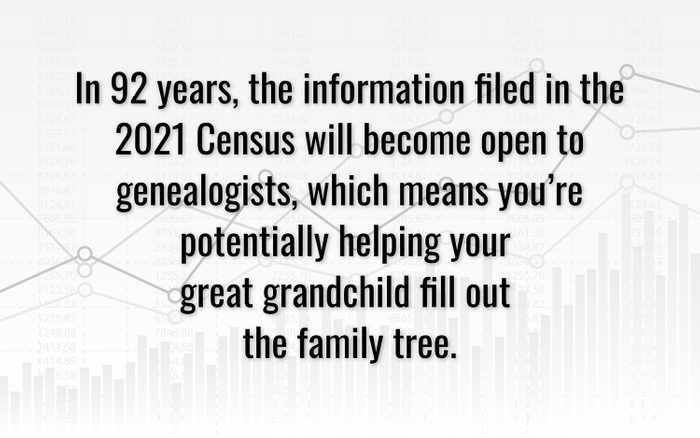Could You Really Be Jailed for Failing to Complete the Census?

If you’re tempted to “forget” to fill out the questionnaire, don’t.
The clock is ticking on your civic duty. Canadians have once again been tasked with completing the Census, which has been required by law since 1871 when the first Canadian Census was taken. But if you’re wondering if you can just conveniently “forget” to fill out the questionnaire this time, don’t. Statistics Canada has a very precise way of counting the procrastinators within the population, too. Just like Santa, they know who’s been naughty and who’s been nice when it comes to helping the nation build a profile of its people. More to the point, they have your contact information and aren’t afraid to follow up.
Get the scoop from a Census representative on what the penalties are for leaving StatsCan on read.
Can I go to jail if I don’t fill out the Census?
Not anymore, says Geoff Bowlby, director general of the 2021 Census and Population at Statistics Canada. “It’s possible to be fined but the jail part has been removed from the Statistics Act,” Bowlby explains. That crucial change happened right before the previous Census was conducted in 2016. Nowadays, failure to complete the questionnaire could land you with a $500 fine as well as a criminal record.
Why is it a legal obligation to fill out the Census?
“Because it’s a fundamental piece of the statistical infrastructure of the nation,” says Bowlby. The numbers gathered by the Census influence decision-making across a broad spectrum, from municipal and federal governments to the private sector, he explains. “For example, one is the required use of the Census under the Federal-Provincial Fiscal Arrangements Act. This act is what determines how the federal government provides funding to the provinces and territories for various health and social programs and allocation of that funding is on a per capita basis, which means per person and based on the census population counts.”
In terms of recent practical applications, consider this: Census data was used to determine how much COVID-19 vaccine Canada bought.

If I don’t fill out the form, I can expect a knock on my door in June, right?
“That’s right,” confirms Bowlby. “We only go to homes where we haven’t received a questionnaire.” This year, enumerators will be equipped with PPE, including double-masks and hand sanitizer, and are instructed to maintain social distancing.
However, the follow-up at the doorstep is relatively rare. “In 2016, we had a 98.4 per cent response rate. We expect nine out of ten homes in the country will respond on the Internet or on paper.”
What happens if I refuse to open the door or tell the enumerator to scram?
If Statistics Canada doesn’t get a response at all, even after following up, they’ll pass the information on to the Public Prosecution Service of Canada (PPSC), says Bowlby. Once a case is referred to the PPSC, the decision to impose a fine and the ultimate outcome of the case rest exclusively with the PPSC.

I got the short form questionnaire. Why didn’t I get the long one like my neighbour?
Blame chance. “It’s a random allocation,” says Bowlby. For every 100 dwellings, 25 will get the long form and 75 will get the short form.”
This is the first Census undertaken during a pandemic year. What’s different as a result?
“We drew up our plans to ensure this is a safe Census and also an accurate Census,” says Bowlby. The most significant change is that the online questionnaire is now available to all Canadians, with a paper version available upon request. “It doesn’t matter if you’re in St. John’s or Victoria, you can respond to the Census online as long as you have an Internet connection,” Bowlby says.
Next: What You Need to Know About Blood Clots and COVID-19 Vaccines




